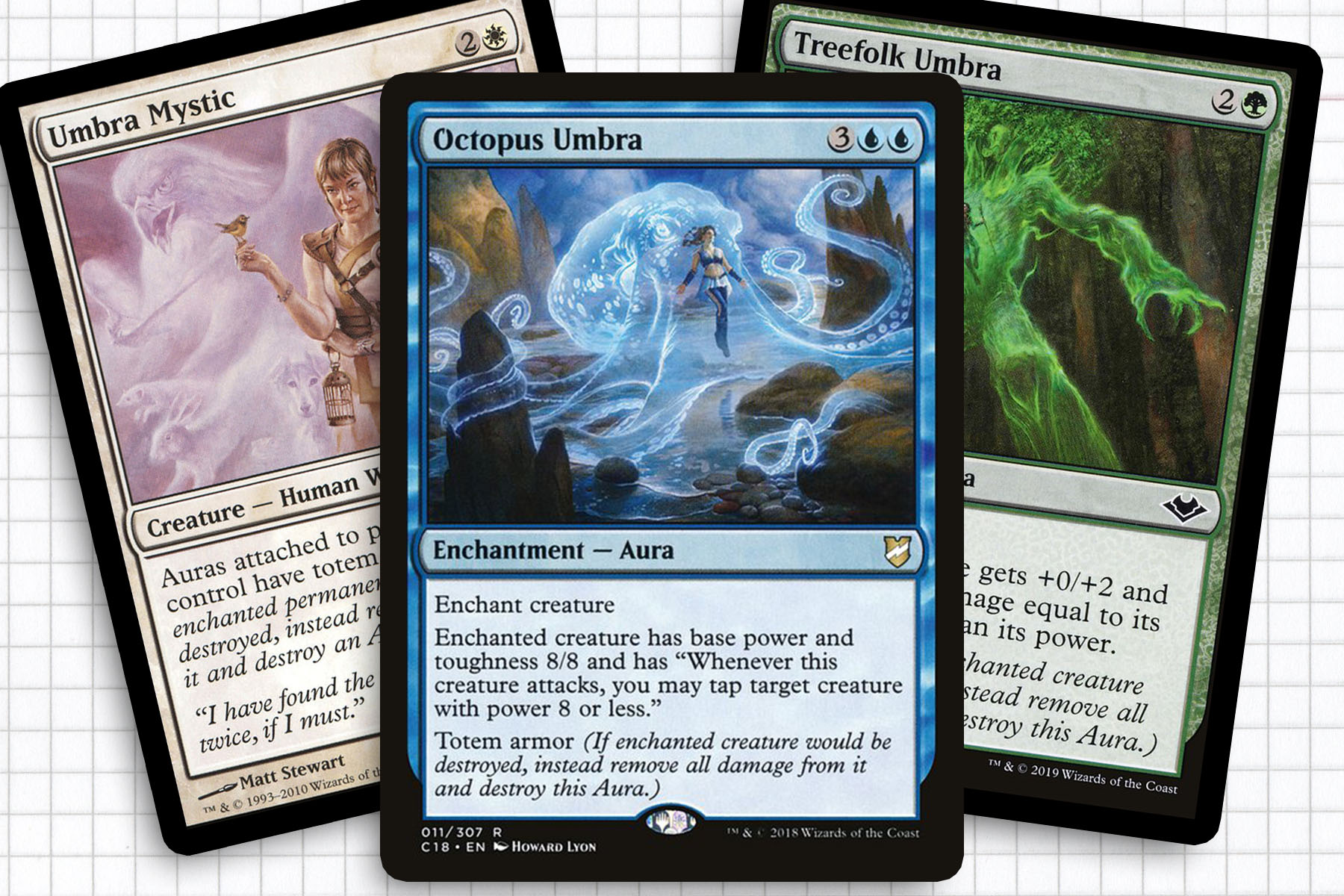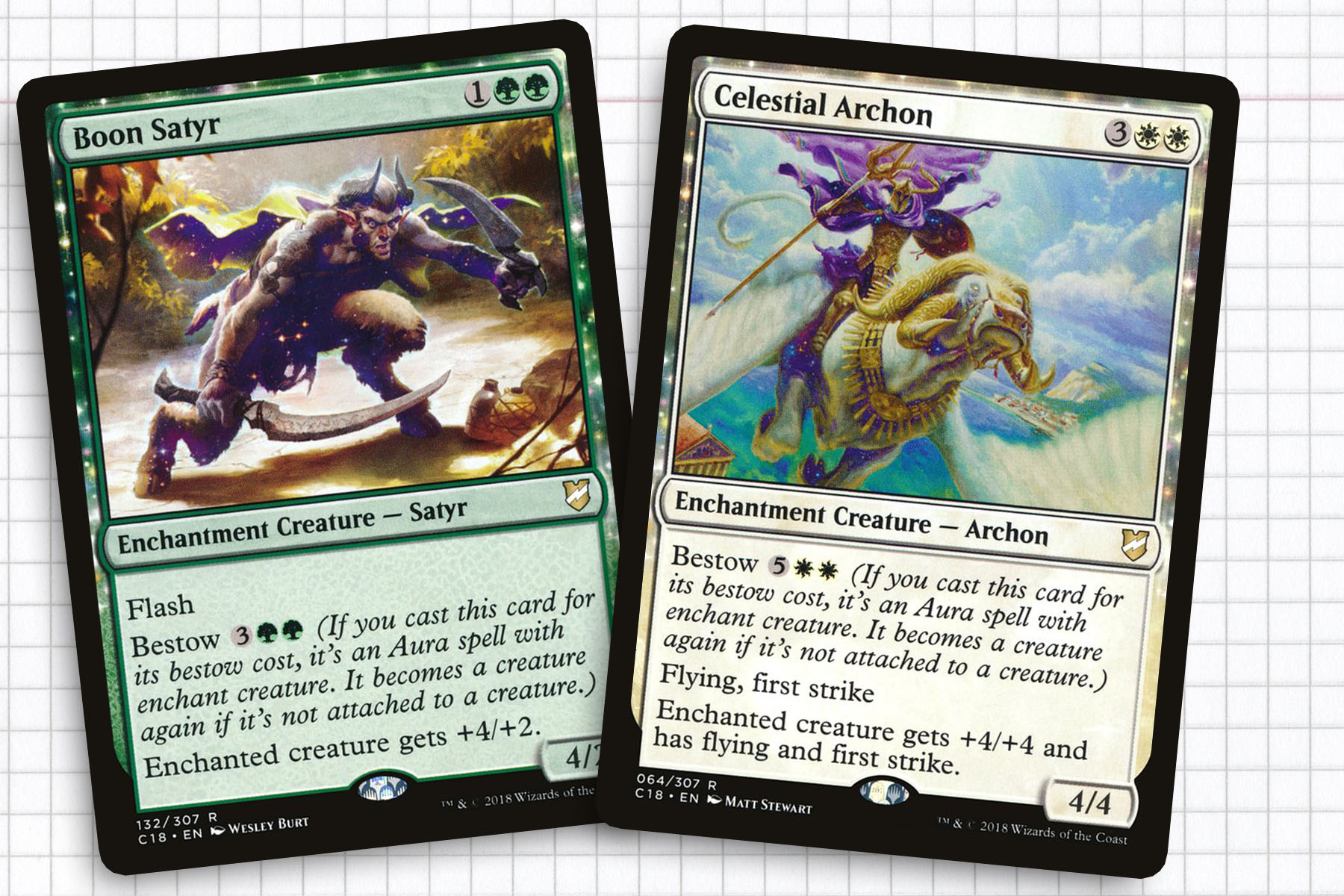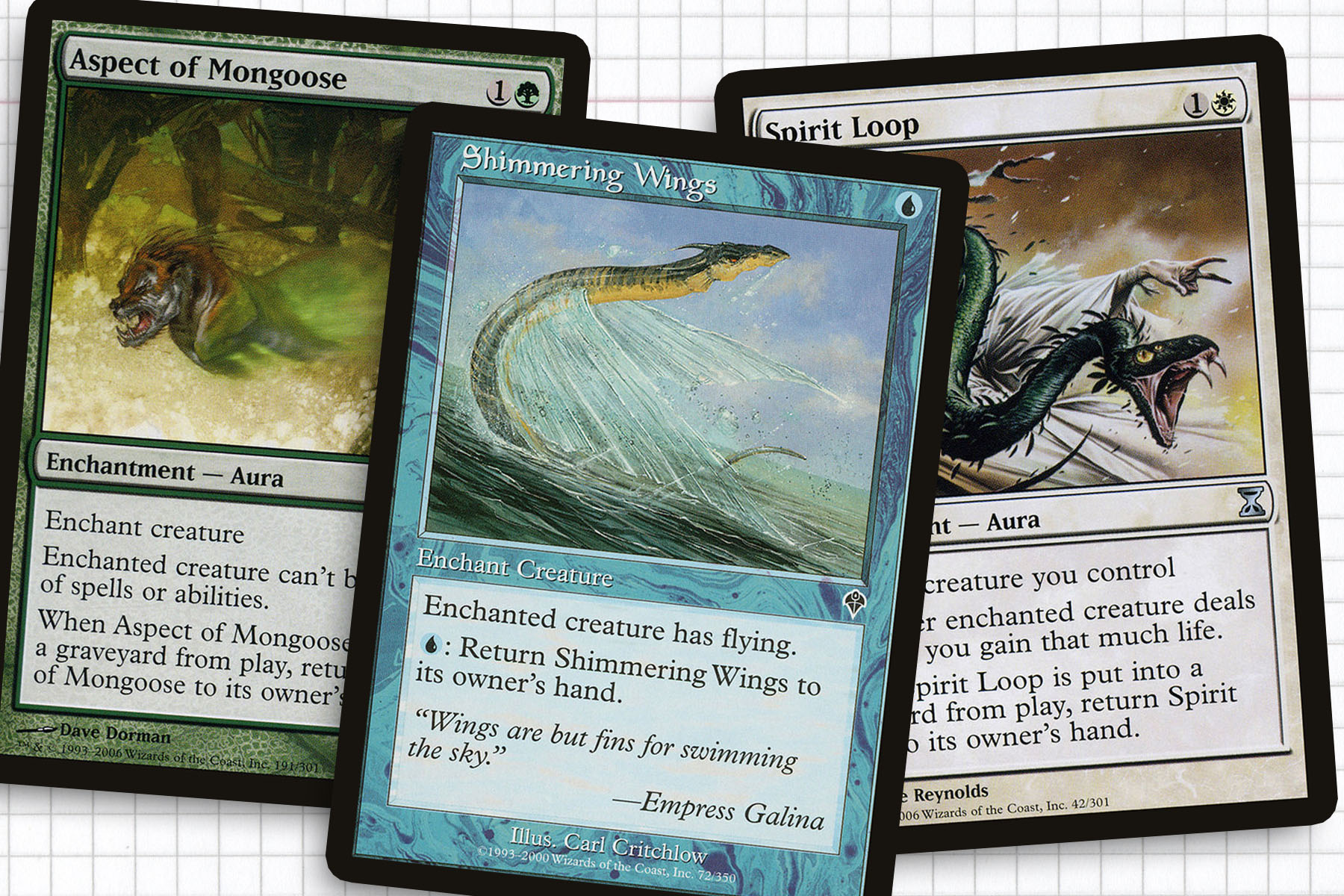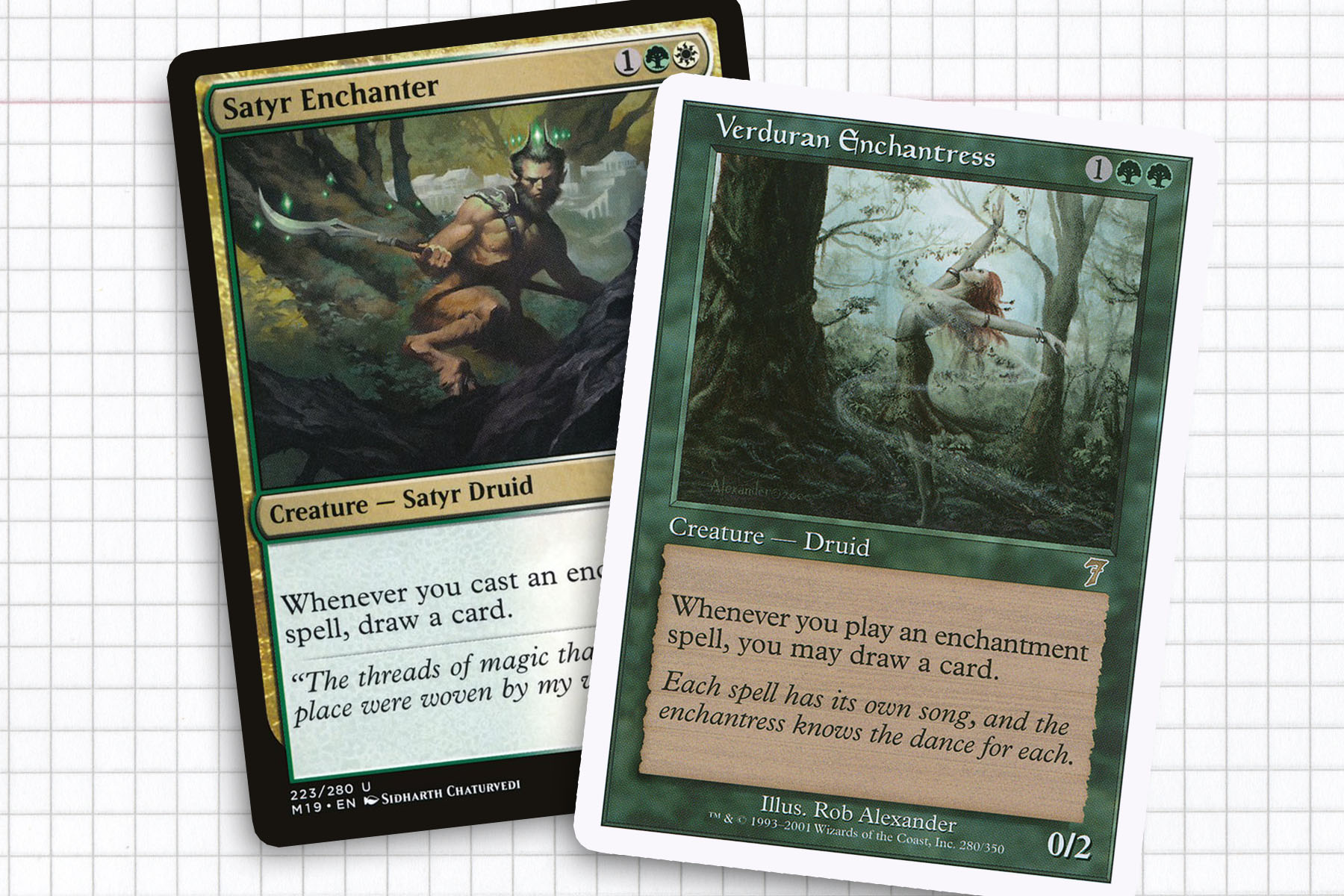I was into manga in high school. I had a monthly subscription to the manga anthology publication, Shonen Jump, during at least ninth through eleventh grade. At first, it was to keep up with the Dragonball Z Cell Saga that had been currently running—I had no idea that the content I was reading at the time was over a decade old—but I started discovering new series as they were readily available every month. This was where I first discovered the series Shaman King and took my first steps into exploring Japanese mythology, coincidentally just in time for Kamigawa block in 2004.
Within the world of Shaman King, a shaman is a person with the ability to communicate and fight with spirits. The series is centered around Asakura Yoh, a laid-back and easygoing heir to the powerful shamanic Asakura Family. He enters the Shaman Tournament, a semi-millennial event that draws shaman from around the world to compete for the chance to become the Shaman King and ultimately, the wielder of the omnipotent Great Spirit.
As far as I know, I was reading as premiered in North America during the early 2000s, and it quickly became my favorite series to keep up with month to month. There was something about the mix of the art style and the lore of the world that really sparked my imagination and invested me to the series. As Kamigawa was being released, I came to the block with my foreknowledge from Shaman King; and to be honest, that knowledge really paid off. I found myself deeply invested in Magic’s version of Japanese mythology.
Much like how I originally came to Magic seeking to build a deck inspired by the Fellowship of the Ring, I wanted to bring my favorite manga’s feel to Magic was well. That is something I’ve never been able to fully achieve. Today, I would like to sketch the skeleton of a deck inspired by Shaman King, with the hope that maybe just theorycrafting will push me closer to finally having a deck I’ve been searching for since Kamigawa block.
As the deck started to take on more enchantress themes, my first thought was to use Estrid the Masked at the helm. But as I’ve gotten deeper into crafting, I have actually decided on Kestia, the Cultivator—not that there is a terrible amount of difference between their potential builds.

Attuned with Auras
As Shaman King starts out, the primary way that a shaman interacted with spirits of the deceased—and in some cases, plants or wildlife—was through the use of their own body as a conduit to allow the spirit a brief opportunity to interact with the physical world. A concept known as Oversoul was later introduced as the Shaman Tournament became the driving force of the series. Here spirits could be channeled into items like weapons or bracelets to become weapons more in the style of DC Comics’ Green Lantern.
This semi-transparent and oversized representation was the visual concept that I most wanted to bring to my decks over the years. Luckily Rise of the Eldrazi introduced totem armor, which has used the same artistic rendering every time Wizards had used it.
Umbras: Bear Umbra, Boar Umbra, Crab Umbra, Drake Umbra, Eland Umbra, Eel Umbra, Felidar Umbra, Hyena Umbra, Indrik Umbra, Mammoth Umbra, Octopus Umbra, Snake Umbra, Spider Umbra, Treefolk Umbra, Umbra Mystic
Auras have been a favorite subtype of mine ever since I started playing Magic, even in spite of the fact that they represent horrible amounts of card disadvantage. In my eyes, totem armor was a good step towards trying to lessen the effect of your opponent using something like a Doom Blade on your enchanted creature. Each aura acts as a helpful shell to keep our creatures alive, especially our general.
Here they will protect our general while also turning on any non-enchantment creatures we’ll be running within our deck. For the purposes of tuning the deck, I wanted to keep all the totem armor cards in mind, knowing full well that not every choice will likely make the final cut. Newer cards like Octopus Umbra or Treefolk Umbra will be auto-includes, as I want to test out their capabilities.

Crossing Mythologies
While the totem armor mechanic is probably my favorite aura mechanic, Kestia’s home of Theros gives us the bestow mechanic. Bestow allows enchantment creatures to act as either creatures or auras. This is also thematic of how Shaman King’s Oversoul works within the manga’s universe, in this case conveying that the spirits that Yoh uses in the series were at one time sapient beings. Bonus points when the bestow creature is an actual spirit. The only thematic letdown here is that none of the cards rendering how the bestow creatures encompass their hosts.
Bestow: Boon Satyr, Celestial Archon, Eidolon of Countless Battles, Heliod’s Emissary, Hopeful Eidolon, Nimbus Naiad, Nylea’s Emissary, Thassa’s Emissary
From a strategic perspective, not losing card advantage in Commander is a very important factor that is built into this deck. Standing ground in the face of a Wrath effect and rebuilding in an unconventional way means that we can be harder for some players to deal with—just be careful of exile effects. I have been a little more selective of which bestow creatures I would include, as we’ve been down this road with no new additions since 2014. Boon Satyr and Celestial Archon are probably the two strongest options, as they give great buffs for economical mana cost whether as creatures or auras.

Reusable Auras
One of the more substantial lessons that our hero, Yoh, learned throughout Shaman King is the importance of taking a step back, studying your opponent, and maximizing resources. This is something that I myself had to learn as I was leveling up in my Magic prowess. For as attractive as auras are too easily you can overcommit to the battlefield and lose a lot of value really quickly. Yet I knew that principle had to be slightly overstated for Commander, as Voltron strategies can be very popular and viable. One of the good finds in my early Commander career was while building my Ertai, the Corrupted deck and discovering the cycle of auras from Urza block that would return to your hand when the creature that they were attached to died.
Recurring Auras: Angelic Destiny, Aspect of Mongoose, Flickerform, Rancor, Shimmering Wings, Spirit Loop, Talons of Wildwood
While not highlighting cards from that exact cycle, occasionally Wizards has given us enchantments in that same mold that are able to accrue more value than the typical aura. My favorite of these is probably Shimmering Wings, which paired with the enchantresses that draw cards whenever you play an enchantment. That will allow you to essentially draw a card for every two blue mana you have available. Don’t sleep on Flickerform either: the ability to keep a Voltron general like Kestia fully equipped can be enormously important.

Obligatory Enchantress Reference
There was no question in my mind that, once we’d committed to totem armor and bestow creatures as much of the base of the deck, we were building some form of enchantress deck. This is an archetype I’ve always wanted to build, but never sat down to really figure out how I would make my own. While I imagine I will find room for the prison enchantments like Propaganda or Elephant Grass, at this point I want to highlight the cards that will make casting enchantments into cantrips or better.
Enchantress: Enchantress’s Presence, Eidolon of Blossoms, Herald of the Pantheon, Mesa Enchantress, Kor Spiritdancer, Satyr Enchanter, Verduran Enchantress
For the uninitiated, the typical enchantress deck tries to gain card advantage by casting enchantment spells with an Enchantress out, like some of the ones listed above. In early Magic the usual form of card advantage accumulated from committing enchantments to the battlefield was card draw, but as time has gone on the use of enchantment-matters effects has broadened to do more than just draw cards.
Enchantments Matter: Archetype of Endurance, Elderwood Scion, Humbler of Mortals, Kruphix’s Insight, Nylea’s Colossus, Silent Sentinel, Starfield Mystic, Whitewater Naiads
With some of the recurable enchantments like the aforementioned Shimmering Wings, not only can we gain a lot of advantage in the form of card draw; but we can also generate consistent constellation triggers from creatures like Nylea’s Colossus. While less thematic of the deck, these suites of cards will do a lot of work to help us overcome the disadvantage of being a more flavor driven deck. This is also part of why I chose to have Kestia, the Cultivator helming the deck—by being an enchantment herself, she will allow us to get some of those fringe trigger off, especially through her bestow cost once Commander Tax makes hard casting her too expensive.
In all my long-winded excitement I didn’t ever get around to talking about important things to consider like token production, counter magic, or any of the cool lands that go along with the enchantment themes of the deck. With flavor-driven builds, that is bound to happen. This was a nice break from the more strategic decks I propose every week.
Even though I’ve grown past reading manga on a regular basis, I really enjoyed keeping up with Shaman King all the way until it’s untimely cancellation. One of my favorite parts of the series was how all encompassing its world was, growing beyond its original Japan-based story and depicting characters from all around the world are the larger arcs summoned shaman all around the world and moved the story to North America. This global influence helped to show how arcana and religion from all parts of the world could be interpreted through the lens of shamanic magic. The series is probably one of the bigger influences outside of Magic that make me want to revisit Kamigawa, and more recently a return to Theros. The overlap of spiritual magic and auras is a fun proxy for the elements of the manga that would not easily translate.
Ryan Sainio is a Graphic Designer who writes about EDH and the EDH community. He has been playing Magic: The Gathering since 7th Edition in 2002 and values flavorful and fun gameplay over competitively optimized decks.

